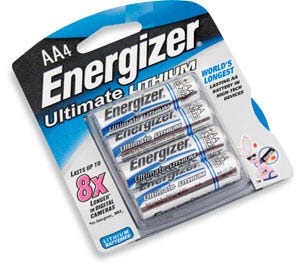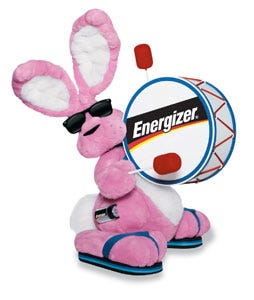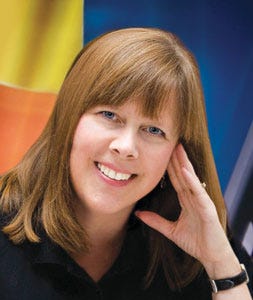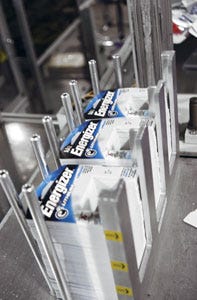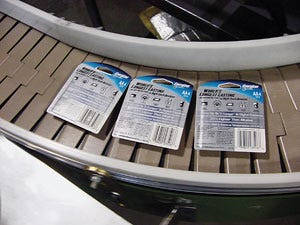Packaging powers sales at Energizer
January 30, 2014
|
Rebecca Oesterle, manager of global packaging development at Energizer Holdings, has worked there for more than 26 years. A graduate of Georgia Tech, Oesterle began as an industrial engineer with the company and in 2000, was appointed supply chain manager, focused on improving manufacturing operations and reducing production costs for larger retail clients including CVS, Walgreens and Target. In her current position, she leads a group of 25 engineers and designers in developing new packaging while acting as a liaison between marketing, sales and operations divisions. Oesterle is also a member of the Packaging Management Council (PMC), a forum of the Packaging Machinery Mfrs. Institute (PMMI [www.packexpo.com]) for senior packaging managers from consumer and industrial goods manufacturing companies. Packaging Digest recently spoke with Oesterle to learn more about how CPGs approach packaging and the trends affecting the industry today.
|
How important is packaging to Energizer?
Packaging is critical to Energizer, and we invest a great deal of effort to ensure it's functional for consumers. While packaging's primary purpose is to protect a product, it's also an important method to attract consumers. And in many ways, it works as a silent salesman, helping provide consumers with all the information they need about the product and how to use it.
How does Energizer approach the package-development process?
We begin by asking ourselves what would consumers desire in this product and where will the product be used. From there, we establish brainstorming sessions. Depending on the product we are launching or redesigning, we will bring together internal design and engineering teams to begin mapping out what a product package may look like and what functionality it may entail. In certain cases, we also leverage the expertise of our suppliers or design agencies for input on specific package designs.
The result of these sessions is the ability to move forward with manufacturing a product package that matches market requirements.
What packaging trends do you see developing in your company's marketplace?
|
With the increased emphasis on sustainability, package design and manufacturing processes are going to need to keep pace. One of the first areas that will experience change is packaging material. With consumers concerned about excess packaging such as clamshells or materials such as PVC, companies will begin to shift to more eco-friendly products and thinner packages.
From a manufacturing perspective, companies are going to have to learn how to be lean. At Energizer, for example, we aim to blend automation and streamline our processes to ensure we are running efficiently without much waste. By doing this, we are able to boost our productivity while remaining profitable.
How important is innovation to your company's packaging? Where do you seek innovation?
Innovation drives success in any company and it is vital to Energizer's business. We strive to create packaging that reflects the product inside and what it does. As machinery and material technologies advance, we are able to do this more accurately. Our internal team of designers and engineers plays a pivotal role here. Based on their knowledge and expertise, we can develop a product and a package that more closely fits what the consumer wants.
Consumer desires are a strong catalyst for packaging innovation. What are they looking for from packaging? How are you measuring consumer wants and needs?
Consumers want to readily identify with a product, and their point of reference is the packaging. They want to know two essential things: what it is and what it does. To satisfy their needs, we rely on innovative package design, messaging and graphics to communicate product features. Equipped with information such as battery grades and iconic images to visually explain what our products can be used for, consumers can make intelligent and informed decisions. To better understand today's consumers, we rely on industry research, surveys and focus groups. Based on the results and the customer feedback we receive, we are able to better address the issues affecting them.
Do you think the sustainability issue has been well defined? Where are the biggest strides being made? What are the biggest hurdles that still need to be overcome?
|
There's still a lot of work to be done both in the definition and general edification regarding sustainability. The industry has witnessed high levels of greenwashing and inaccurate claims about what “going green” means. The result is massive amounts of confusion around what sustainability is and the benefits it offers.
The lack of education, stringent guidelines or a set of standards means sustainability is open to interpretation. To help mitigate the flow of misinformation, there's a need for a governing body capable of setting a proper definition and approved guidelines by which the industry would follow. Some of the biggest strides being made are the packaging materials emerging. Advancements in biopolymers and longer lasting materials are aiding manufacturers in providing more eco-conscious packaging with better, and less, material.
Automation is another growing trend. What do you think the drivers are behind this growth? What are end users such as Energizer looking for from automation?
The key to the growth in automation is the need for companies to become more efficient. For Energizer and most CPGs, automation is also about reducing costs and running lean.
An example we have benefited from are new technologies offering us the liberty to “plug and play.” We flip a switch and the equipment does what it needs to do without downtime or bottlenecking issues. With automated processes in place, we are able to track our productivity and see where we can improve.
What new or emerging technologies impacting packaging do you think will be important in the next few years?
|
The key to growth in automation is the need to |
Many of the emerging technologies are going to be linked to the progress of sustainability. I anticipate much of the advancements coming in the form of new and innovative packaging materials. We are only beginning to scratch the surface, and as we better understand the potential of reusable and recyclable materials, we'll see many manufacturers incorporating them into their packaging.
What are some of the opportunities and challenges facing the packaging industry today and the next few years?
In the last few years we have seen packaging come into its own. It is no longer an afterthought, but an integral part of the product development phase. As more companies begin to understand packaging and the benefits both on functional and marketing levels, we will probably see more investment and importance placed on advancing packaging technologies. The current economic state will also begin to positively affect the importance of packaging. As budgets tighten, packaging's role as a vehicle for communication with customers will become more prominent. Ultimately, what companies want is for their product to be recognized and purchased–and packaging can encourage this behavior.
How do you begin choosing new packaging equipment, and what do you search for? What are the biggest factors when you make an equipment purchase decision?
We have a small group of trusted and tested suppliers that we have worked with for several years. Depending on what our needs are and what we are trying to accomplish, we will go to them first to source equipment. At the same time, we rely on internal networks, tradeshows like PACK EXPO and industry associations to keep track of the latest innovations that may benefit our operations.
When making a purchase, we have several things to consider, including cost, leadtime and floorspace. So we need to be sure we are purchasing equipment that will run efficiently and be cost-effective.
When sourcing new packaging, what resources do you use? How does attending packaging tradeshows fit into your search for new packaging?
There are several ways we identify and source packaging. Similar to how we go about purchasing equipment, we leverage the relationships we have built with suppliers and tap into their expertise. Based on this, we can begin outlining what best fits our business needs. Tradeshows play a part in how we go about finding new technologies. They provide us with a global view of the industry and allow us to meet with suppliers face-to-face and see solutions in action. At the same time, tradeshows offer a unique opportunity to discover technologies we were not aware of, enabling us to constantly re-evaluate the way we do things.
Can you describe Energizer's approach to tradeshows such as PACK EXPO?
Because PACK EXPO is a large industry event, we often travel to the show with a large team. We meet ahead of time to discuss our objectives. Depending on what each person is looking for, we'll assign responsibilities—some members may visit suppliers while others may want to attend conference sessions. Following the show, we reassemble and participate in a download session where everyone shares their experiences and findings to the entire packaging group.
NOTE: To register for PACK EXPO Las Vegas or obtain more information, visit www.packexpo.com, call 703/243-8555 or email PMMI at [email protected].
You May Also Like
